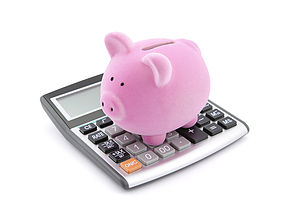 In 2009, the TFSA was created to encourage Canadians to save money where it could grow tax free and be free from taxes when withdrawn. Let me get this straight, I can invest money that can grow over time, take it out whenever I want and pay no tax? It seems too good to be true? While yes, there are limits to the account, but when used properly it is by far the best investment vehicle in Canada. For many Canadians however, it is still one of the most misunderstood investment tools.
In 2009, the TFSA was created to encourage Canadians to save money where it could grow tax free and be free from taxes when withdrawn. Let me get this straight, I can invest money that can grow over time, take it out whenever I want and pay no tax? It seems too good to be true? While yes, there are limits to the account, but when used properly it is by far the best investment vehicle in Canada. For many Canadians however, it is still one of the most misunderstood investment tools.Let’s look at some of the most common mistakes made with these accounts.
-
Canadians don’t use them. Despite the benefits, only 38% of eligible Canadians have a TFSA. In 2009, the contribution limit was $5,000 for any person over the age of 18 living in Canada. The initial criticism was that this limit was too low to bother. Fast forward to today, most people could have contributed up to $46,500. For a couple, that is a total of $93,000 in tax free investment room.
-
Canadians treat them as a “Savings” bank account. For investors looking for a guaranteed return, interest earned in a TFSA on “High Interest Savings” or GIC investments is tax free. But the TFSA can be so much more than just a savings account. As an example, investors can hold Stocks, Bonds, ETFs and Mutual Funds to create a diversified portfolio suitable for their own risk tolerance and savings strategy.
-
Canadians haven’t factored the benefits of a TFSA along with their pension/retirement savings. Any money withdrawn from a TFSA is not taxable. Therefore, these funds are never considered as a source of income. Since many Government Benefits that you receive in retirement are income tested, this is potentially a huge savings advantage.
Now, the good news. All is not lost for Canadians and their TFSAs. That $46,500 in contributions that could have been made already, can still be made. Just like an RSP, contribution room accumulates over time. By this time next year the limit will be up to $52,000 per person. For investors locked into GICs, a long term and diversified investment portfolio can be started with any new contributions. Finally, a TFSA retirement income strategy can be made a part of every financial or estate plan. Amazingly, if you can commit to maxing out your TFSA contributions now and continue to do so for future years, 20 years from now your account could be upwards of $400,000!
Article courtesy

1 Source: The Huffington Post May, 2015
2 Based on an annualized rate of return of 7% and maximum ongoing annual contributions of $5,500
